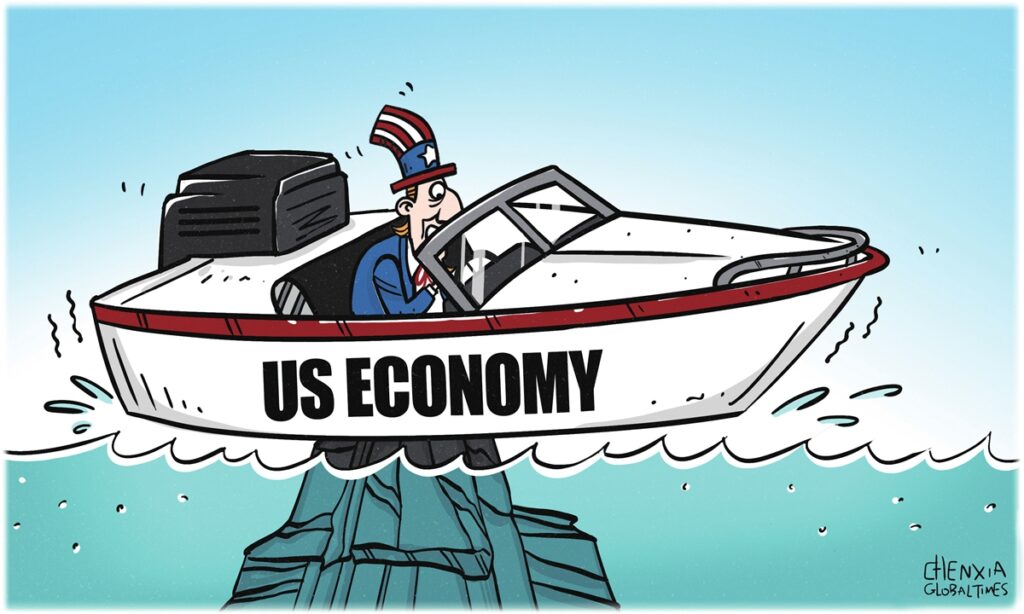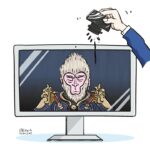The US may be on the brink of cutting interest rates, but the bigger challenges facing the US economy are only just beginning. The high-tech industry in the US has not fully shown its positive impact on the manufacturing sector, thereby constraining the overall growth potential of the US economy. This could be part of the backlash against Washington’s efforts to contain or decouple with Chinese manufacturing.
US Federal Reserve Chair Jerome Powell’s recent dovish remarks seem to indicate that the Fed’s fight with inflation has finally reached a critical turning point. However, in light of the challenges facing the US economy, the US may need a more comprehensive policy turnaround.
“The time has come for policy to adjust,” Powell said in a highly anticipated speech to the Kansas City Fed’s annual economic conference in Jackson Hole, Wyoming. “The direction of travel is clear, and the timing and pace of rate cuts will depend on incoming data, the evolving outlook and the balance of risks.”
In contrast to Powell’s ambiguity over rate cuts in the past, his explicit declaration was widely seen as the clearest signal yet that the Fed has probably decided to change its stance with likely rate cuts announced at its September 17-18 meeting.
However, Powell’s speech is not an isolated signal, but rather comes just days after the surprisingly high revision to the nonfarm payroll numbers. The US economy created 818,000 fewer jobs than originally reported in the 12-month period through March 2024, the Labor Department reported on Wednesday. The revision to the nonfarm payroll numbers was the largest since 2009, according to media reports.
The revision revealed that the US job market was weaker than it seemed for some time and underscored recent economic indicators in the US, reinforcing market expectations for rate cuts. In this context, the Fed’s interest rate cut signal seems to be in line with the need to alleviate the market’s concerns over a slowing economic recovery.
While the adjustment of monetary policy may help reduce risks in the US economy and increase the odds of a “soft landing,” it cannot fundamentally solve the problem. Recent US economic data have shown weakness. For instance, the unemployment rate unexpectedly rose to 4.3 percent in July, its highest level since October 2021, triggering the Sahm Rule, which is widely recognized for its simplicity and ability to quickly reflect the onset of a recession. In this case, relying solely on monetary policy adjustment is not enough as the challenge facing the US economy lies in deeper structural issues.
The primary challenge facing the US economy is centered on its manufacturing and industrial sectors. With the deepening of globalization, the US is no longer able to return to the large-scale manufacturing economic stage of the past. While the country excels in high-tech industries, these sectors have yet to significantly exert a widespread and fundamental impact on large-scale industrial applications.
Therefore, the key focus for the future of the US economy lies in how high-tech industries can better support manufacturing and how to drive economic growth by tapping into high-tech consumer markets.
The US has been attempting to squeeze Chinese manufacturing out of its global supply chain through measures such as increased tariffs, potentially leading to a reshaping of the global supply chain. However, this approach carries the risk of escalating costs and market access restrictions. If China’s industries are excluded from the US industrial restructuring, it is possible that China’s market may shift away from American products, presenting a challenge to the market prospects of US technology companies.
All in all, Powell’s recent speech, coupled with the substantial downward revision to the nonfarm payroll numbers, indicates that the US economy is at a crucial juncture. The evolution and upgrading of the US economy call for directional changes in monetary policy and a more holistic policy turnaround encompassing industrial policy, international trade relations and other factors.
GT




